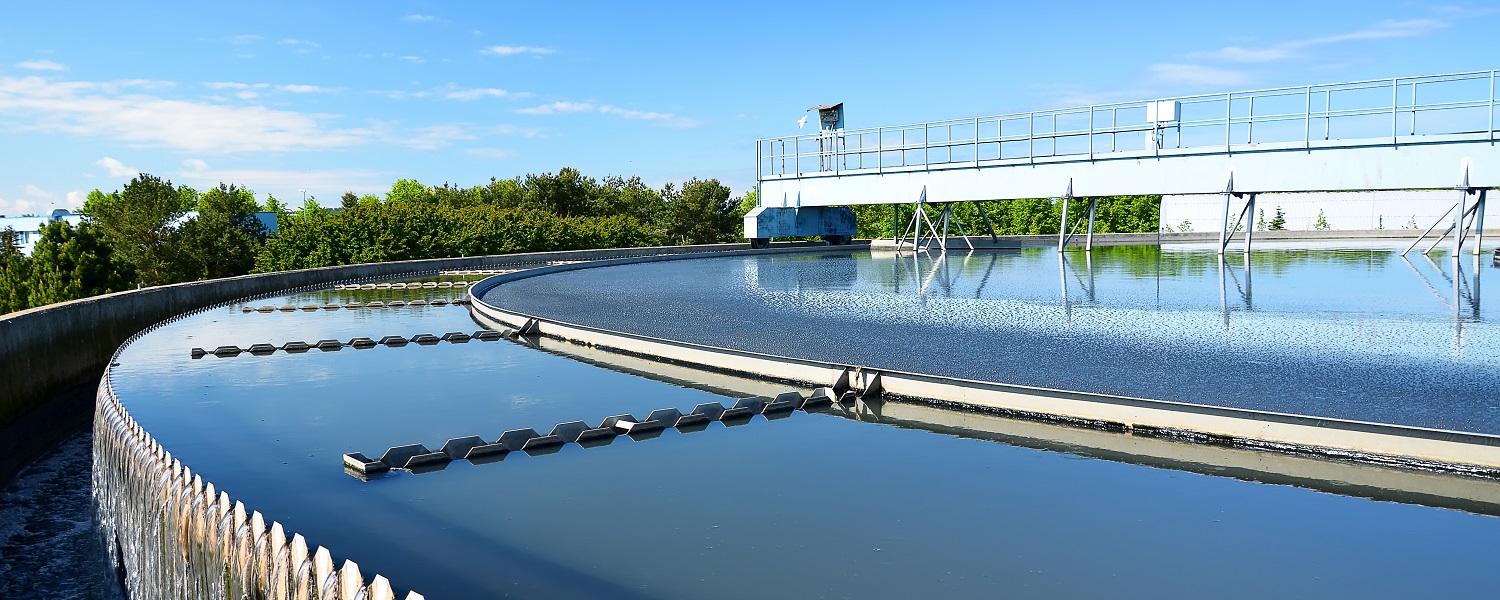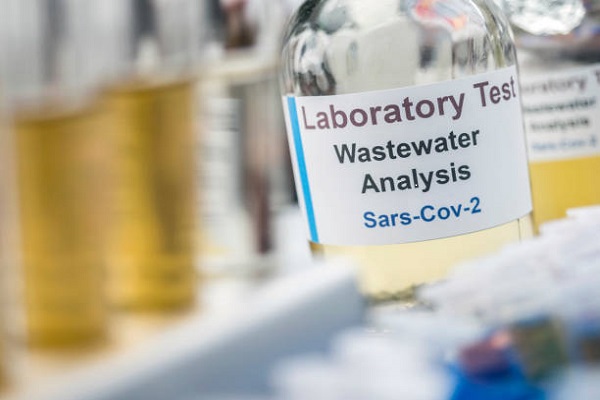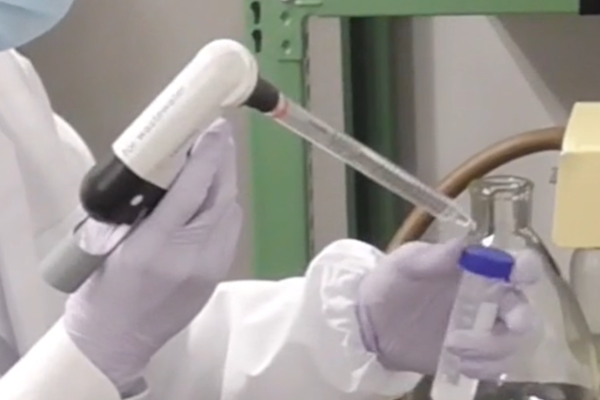Wastewater-based Epidemiology Surveillance Service
Outline of WBE Surveillance Service
Comparison with existing clinical testing
| Existing clinical testing | WBE surveillance |
|---|---|
Only symptomatic individuals are tested, in principle. |
Infected individuals excrete the virus in their urine and feces; the virus can be detected in asymptomatic as well as symptomatic individuals. |
Time and labor are required to know the infection status within a population. |
It is possible to grasp the infection status within a population. |
Appropriate handling of personal information is required. |
Specific individuals cannot be identified. |
Informed consent for cooperation in the surveillance is required. |
Informed consent is not required. |
A cost is incurred for each person receiving a test. |
The total cost is lower for mass testing. |
Flow of Service
Service contents
① Quantitative analysis by Hokkaido University-Shionogi method
② Mutation analysis by NGS
Our service for municipalities (NEW)
Wastewater samples are collected regularly from each wastewater treatment plant in a municipality and taken to our laboratory for analysis of SARS-CoV-2. Analysis results will be returned within four to five business days after receipt of samples. The results can be used as epidemiological indicators to identify the prevalence of COVID-19, potential outbreaks and convergence in the catchment area.
We expand the wastewater-based epidemiology service to mutation analysis using the next-generation sequencer (NGS) for identification of mutant strains of SARS-CoV-2. Our NGS based service enable to clarify the spread of mutant strains in the certain region sharing wastewater. Since a certain amount of RNA concentration is required for the NGS based analysis, the service is provided as an option service together with the quantitative wastewater-based epidemiology service.
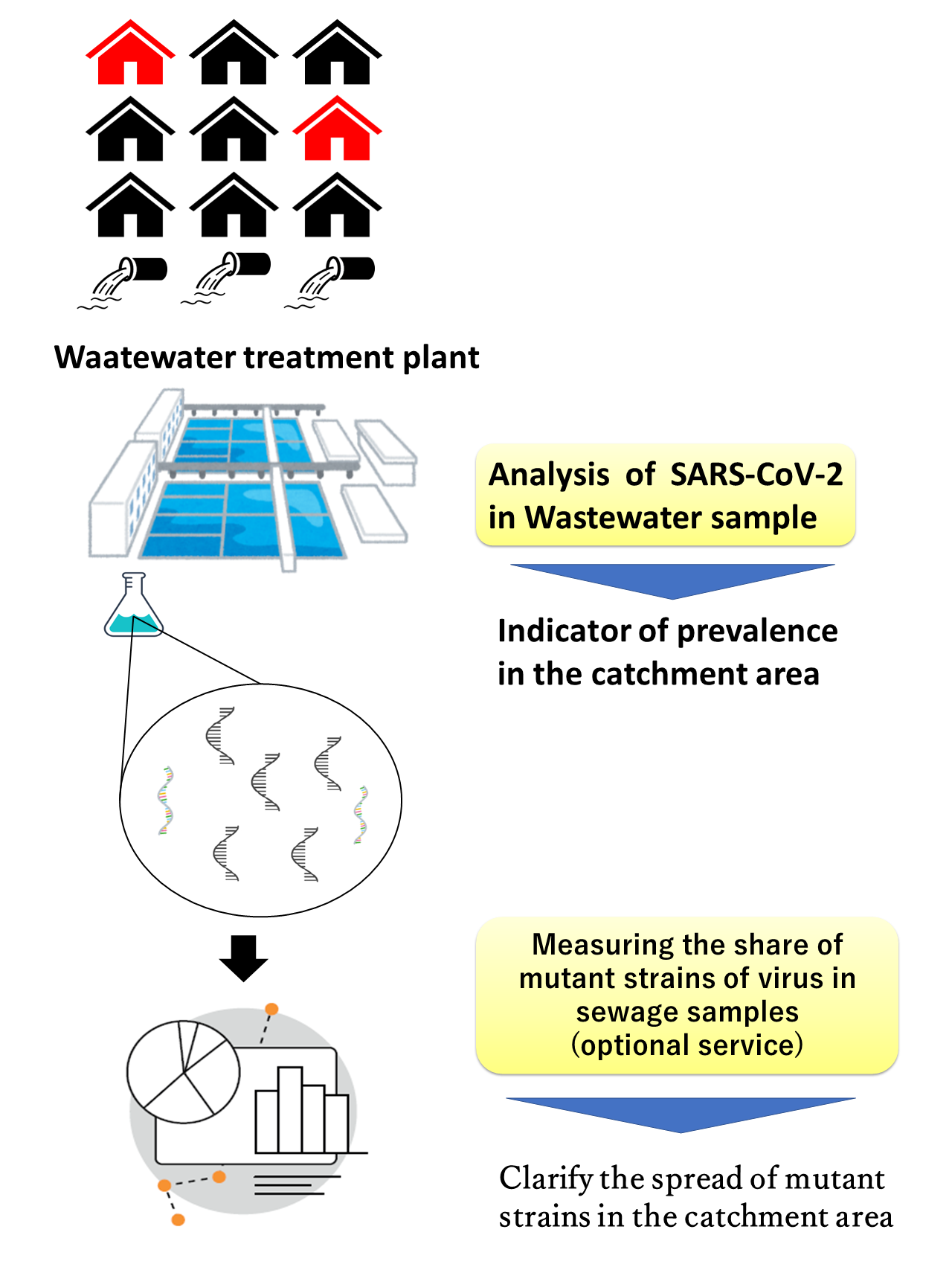
Wastewater treatment plant
(Sampling: approx. 100ml)
(Sampling: approx. 100ml)
▼
1day
1day
Shionogi
- Analysis at the Research Center
- Data analysis
- Report creation
▼
4 – 5 business days
4 – 5 business days
Municipality
· A basis for decision making regarding measures to maintain urban functions, such as infection prevention measures and economic measures
· A basis for decision making regarding establishment of medical care system and securement of medical resources
▼
Consultation required
Consultation required
Municipality
・Monitoring the trends of new mutant strains
・Providing information for constructing an early countermeasure system
Service for various types of facilities
It is possible to investigate the occurrence status of COVID-19 positive cases for each facility. By carrying out targeted PCR testing after establishing the presence of SARS-CoV-2 by WBE surveillance, it is possible to early detect infected individuals and the occurrence of a cluster, thereby preventing the spread of infection.
・Hospitals
・Elderly care homes
・Group housing facilities such as dormitories
・Building
・Event venue
・Concert hall
Note: At present, this service is only available for facilities with septic tanks or raw water tanks.
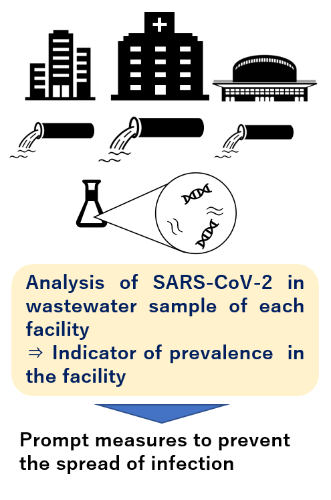
Various types of facilities
(Sampling: approx. 100 ml)
(Sampling: approx. 100 ml)
▼
1day
1day
Shionogi
- Analysis at the Research Center
- Data analysis
- Report creation
▼
4 – 5 business days
4 – 5 business days
Various types of facilities
・Identification of infected individuals (PCR testing, etc.)
・Identification of close contacts, health monitoring
・Implementation of measures to prevent the spread of infection
About Wastewater-based Epidemiology
Our news release relating Wastewater-based Epidemiology Surveillance Service
1. Press release on March 19, 2021
Establishing an Automated System for the Analysis of SARS-CoV-2 in Wastewater
2. Press release on April 14, 2021
Wastewater surveillance to monitor COVID-19 starts in Osaka Prefecture
3. Press release on June 2, 2021
Notice Regarding the Signing of Basic Agreement of Business Partnership between SHIMADZU and SHIONOGI for Wastewater Surveillance for Viruses in the Field of Infectious Diseases, Including Novel Coronavirus
4. Press release on June 11, 2021
Notice Regarding an Exclusive license Agreement for a Sensitive Virus Detection Method of Viruses and Bacteria, Including Novel Coronavirus, between Hokkaido University and SHIONOGI
5. Press release on June 14, 2021
SHIONOGI Announces the Start of the Wastewater Epidemiological Surveillance Service for the Novel Coronavirus in Japan
6. Press release on December 7, 2021
Shionogi Announces Launch of Mutational Analysis Services for Wastewater-based Epidemiological Surveillance of the Novel Coronavirus

